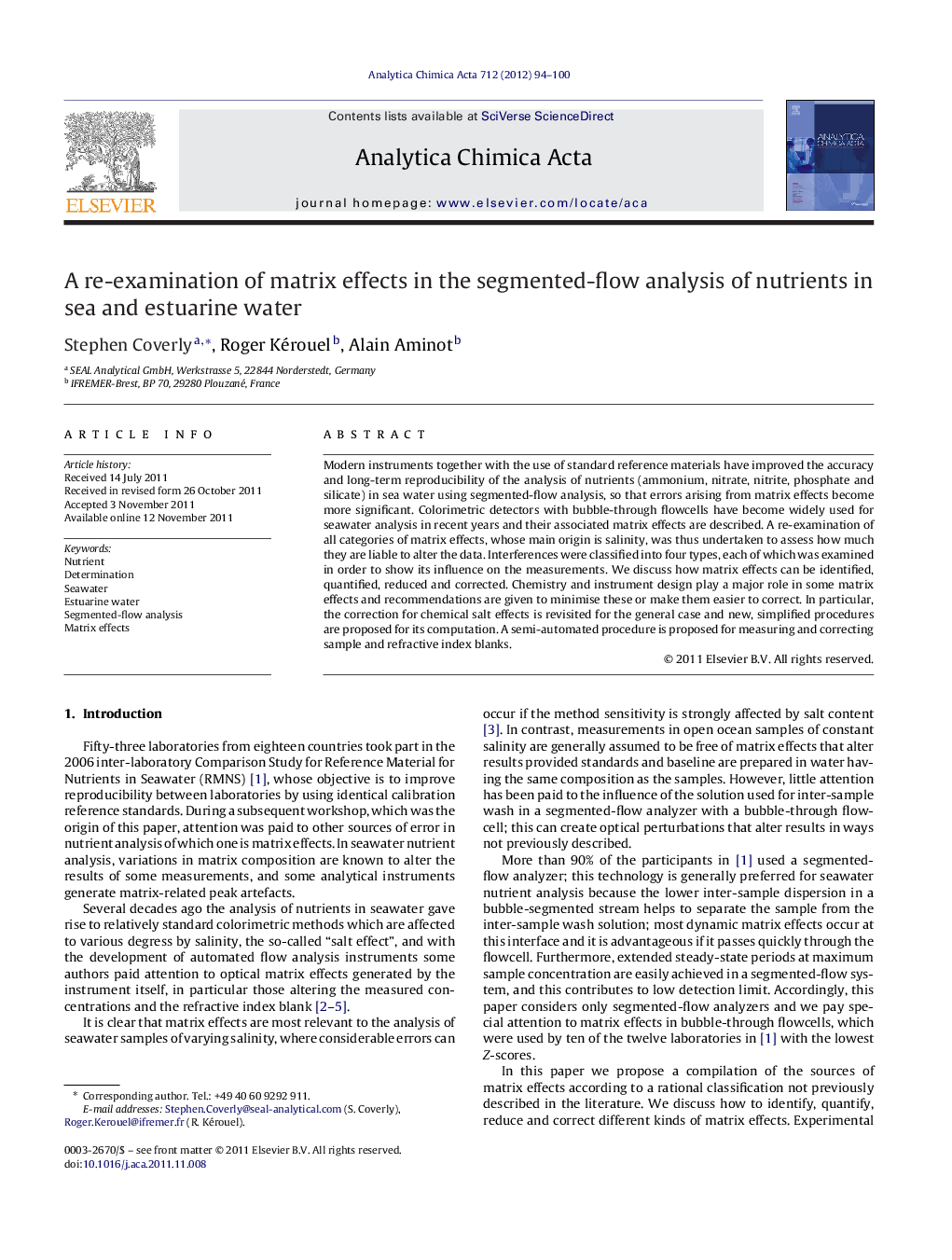| Article ID | Journal | Published Year | Pages | File Type |
|---|---|---|---|---|
| 1166473 | Analytica Chimica Acta | 2012 | 7 Pages |
Modern instruments together with the use of standard reference materials have improved the accuracy and long-term reproducibility of the analysis of nutrients (ammonium, nitrate, nitrite, phosphate and silicate) in sea water using segmented-flow analysis, so that errors arising from matrix effects become more significant. Colorimetric detectors with bubble-through flowcells have become widely used for seawater analysis in recent years and their associated matrix effects are described. A re-examination of all categories of matrix effects, whose main origin is salinity, was thus undertaken to assess how much they are liable to alter the data. Interferences were classified into four types, each of which was examined in order to show its influence on the measurements. We discuss how matrix effects can be identified, quantified, reduced and corrected. Chemistry and instrument design play a major role in some matrix effects and recommendations are given to minimise these or make them easier to correct. In particular, the correction for chemical salt effects is revisited for the general case and new, simplified procedures are proposed for its computation. A semi-automated procedure is proposed for measuring and correcting sample and refractive index blanks.
Graphical abstractFigure optionsDownload full-size imageDownload as PowerPoint slideHighlights► We reclassify matrix effects and distinguish between static and dynamic origins. ► We contrast matrix effects in debubbled and bubble-through flowcells. ► We show how matrix effects can be measured and reduced. ► We propose simplified correction procedures for chemistry-related matrix effects. ► We propose a semi-automated correction procedure for refractive index blanks.
